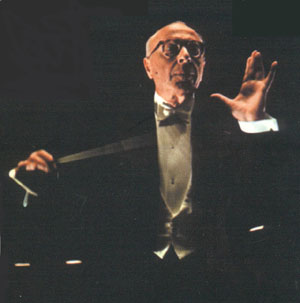 3 George Szell
[ from Sony Classical CD ]
3 George Szell
[ from Sony Classical CD ]| Music Home | Photo Gallery | Discography | Jacket Images | English |
George Szell(7th Jun. 1897 ~ 30th Jul. 1970)
[ From technique to perfection ]
 3 George Szell
[ from Sony Classical CD ]
3 George Szell
[ from Sony Classical CD ]
After Furtwängler's death, it's common sense that there has never been such a great conductor like him showing subjective interpretation. However, there have always been other types. George Szell, the perfectionist of whom James Galway said that "he is sheer technician and persues technical perfection", an ensemblist who said "I polish the ensemble of the whole orchestra at the viewpoint of the chamber music" was surely one of the representatives in them.
György Szell was born at Budapest, but moved to Vienna at the early ages, where he learned music from Eusebius Mandyczewski(Brahms' friend), composition from J.B.Förster, and piano from Richard Robert, one of whose pupil was Rudolf Serkin(with whom later Szell gave many concerts in USA). He was surely a child prodigy judging from the fact that he performed Mozart's concerto with Vienna Symphony only at 10-year-old, and that Emperor concerto with Berlin Philharmonic (piano & conducting) and conducted a work of his own at the same concert at 17-year-old.
In
spite of these lustrous younger days, he grew by traditional
local opera house training - Berlin Royal opera(1915~17),
Strasbourg(1917~18), Prague(1919~21), Darmstadt(1921~22), Düsseldorf(1922~24),
and moved to Berlin State Opera as a first director(1924). At
Berlin Royal Opera, he was under R.Strauss, who taught George.
George even recorded a part of Don Juan because his
teacher arrived late at the scheduled recording session(released
record did NOT mention George's name). George recorded many of
R.Strauss' works and had authoritive interpretation about his
works, perhaps because of this personal relationship to the
composer himself.
George took
position as the first director of Prague German Opera in 1929,
when he began to be named at HMV's disques. Casals' Dvorak recording with him in 1937(George suggested recording to Casals after a
very satisfying concert) has high reputation up to now. George
also conducted at Abbey Road as a accompanist of Moiseiwitch and
Schnabel, which were released by Naxos at recent days.
He had
main activity in concert podium from 1937, and moved Hague
Residentie Orchestra and Scottish Orchestra in Glasgow as a chief
conductor. In 1939(WWII occurred) he was in USA(where he
conducted after 1930), and did not return to wartime Europe and
later nationalized, named George. He was guested by NBC
Symphony(invited by Toscanini), and especially had high fame by
conducting Wagner at MET from 1942 in Rudolf Bing era. Several
live recordings - Boris Godounov, Tannhäuser, etc -
survived now. However, after serious confrontation with Bing, he
said to him "I would not conduct here" and MET
audiences could not see him again.
Most
of all, his most famous and
fruitful achievement is, perhaps unanimously, to build Cleveland
Orchestra up. In 1946 Erich Leinsdorf was chief conductor. George
guested to Cleveland in 1945 and his concert had got great
applauses. When Leinsdorf left in 1946, Szell was appointed. He
proposed a condition "All powers to me about the
orchestra" to the trustee of the orchestra. Cleveland was
young and George was 49. All thought "George thinks this
position as a ladder to the major orchestra, like Artur
Rodjinsky(moved to New York Philharmonic) and Erich
Leinsdorf". However, George was settled and the decision was
proved as a crucial turnover to the orchestra, which made the
present Cleveland is surely one of the top-tiers in America, not
only in USA. Literally, Szell had ALL the powers about the
orchestra, including scheduling, program, and the right to hire
or fire members. He changed two-thirds of the members within a
year, increased the number of members from 88 to 104 - the result
was wonderful.
He was very strict and stubborn as a conductor,
and did not allowed any compromise. His partners as a solist
should be thorougly qualified by his eyes. Pierre
Fournier's
reminiscence; "When I had concert with the Cleveland, he
informed that the program was one of the Bach's unaccompanied
cello suite and Don Quixote."1)
Fournier was already the world first-ranked cellist then, but
George would like to test him. Pierre had to play Bach in front
of all the orchestra members!
The refined ensemble of Cleveland resulted from
the intense training, which was by far more fierce than 'normal'
hard training. Once George said "We have seven concerts a
week, only two with audiences." during 24 years. George's
tradition is a legendary in this orchestra and its blood. As an
example, only a third of the orchestra members were changed till
early 1990s after Szell passed away. In any rehearsal of guest
conductors, they say the orchestra members stare only at the
conductor as Szell asked them to do so.
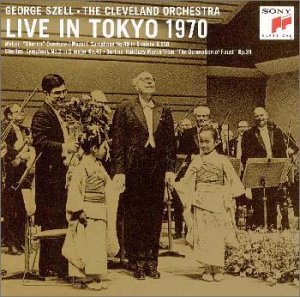 While nurturing Cleveland, he often guested
European orchestras including many recordings. Featuring Salzburg
Festival(1948~69), he conducted London Symphony and Berlin Radio
Symphony in EMI, a single shot with DG was the famous Dvorak's
cello concerto with Fournier, accompanying his friend Clifford
Curzon with Vienna
Philharmonic and London Symphony in Decca. Also many symphonic
works were recorded in Decca and Philips label with London
Symphony and Concertgebouw, with which he retained long
partnership and remained about 6 LPs though the Concertgebouw
members complained his rehearsal was too rigorous and tough. It
was very exceptional that Karajan, who very rarely guested except
Vienna Philharmonic then, conducted the Cleveland Orchestra at
1967 Salzburg Festival2). It was said that Karajan thought highly of
the agility of the Cleveland.
While nurturing Cleveland, he often guested
European orchestras including many recordings. Featuring Salzburg
Festival(1948~69), he conducted London Symphony and Berlin Radio
Symphony in EMI, a single shot with DG was the famous Dvorak's
cello concerto with Fournier, accompanying his friend Clifford
Curzon with Vienna
Philharmonic and London Symphony in Decca. Also many symphonic
works were recorded in Decca and Philips label with London
Symphony and Concertgebouw, with which he retained long
partnership and remained about 6 LPs though the Concertgebouw
members complained his rehearsal was too rigorous and tough. It
was very exceptional that Karajan, who very rarely guested except
Vienna Philharmonic then, conducted the Cleveland Orchestra at
1967 Salzburg Festival2). It was said that Karajan thought highly of
the agility of the Cleveland.
Szell's last concert trip was on May 1970 in
Japan, Korea, and Alaska. The last recording of him is live on 22nd May at Ueno Bunka-Kaikan(Culture Hall), Tokyo(Sony Japan issued as CD and SACD). After two months
of this trip, he passed away from bone marrow cancer in Cleveland
on 30th July. Though he knew his health had declined, he accepted
the last tour offer.
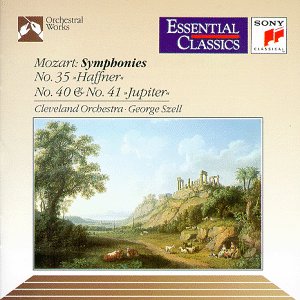 His style can be roughly said as simplicity,
technical perfection, refined and well-trained ensemble of
orchestra, and straightforward force & drive. Perhaps
this might seem to be similar to another Hungarian in America,
Fritz Reiner, but my opinion is that Szell is surely more refined
and transparent. It's well-known that he commented
"(Cleveland) will be an ideal instrument for the musical
expressions", we can hear his ideal in his late recodings
with Cleveland - of a strict chamber musician and perfectionist.
When Karajan first toured America with Berlin Philharmonic,
critics said "this combi showed that a grand orchestra could
play like a chamber music team with utmost and unified
ensemble", but I tempted this might be proper more to Szell
and Cleveland combi. His knowledge to all the instruments of
orchestra was formidable, which may contribute to this skill of
course.
His style can be roughly said as simplicity,
technical perfection, refined and well-trained ensemble of
orchestra, and straightforward force & drive. Perhaps
this might seem to be similar to another Hungarian in America,
Fritz Reiner, but my opinion is that Szell is surely more refined
and transparent. It's well-known that he commented
"(Cleveland) will be an ideal instrument for the musical
expressions", we can hear his ideal in his late recodings
with Cleveland - of a strict chamber musician and perfectionist.
When Karajan first toured America with Berlin Philharmonic,
critics said "this combi showed that a grand orchestra could
play like a chamber music team with utmost and unified
ensemble", but I tempted this might be proper more to Szell
and Cleveland combi. His knowledge to all the instruments of
orchestra was formidable, which may contribute to this skill of
course.
His 'Jupiter' recording surprises us as he showed perfect control of
the fourth movement of which counterpoint structure is notorious
to grasp, with great playing skill of strings and winds sections
like only-one-player to each sections. While the technical side
is fascinating, many listeners feel this performance is somewhat
'militarily emotioned'. I think we
can remind Karl Böhm's Berlin Philharmonic recording(DG) with tough and strict interpretation, who
said 'No sentimentalism in Mozart'. However, the important
difference between the two conductor is brass section; we almost
can't hear brasses in Bohm but NOT - very clear - in Szell.
Actually the brass section, especially trumpet, is of little
musical consequence in this work, but the impression comes to be
very different. Though taught in Vienna Szell never interpreted
Mozart as 'Viennese bonbon'. 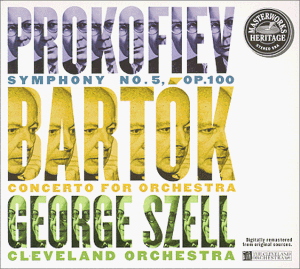
This kind of expressional style, so-called
'intellectualism', can sometimes make works very fresh. Sony's
excellent reissues 'Masterworks
Heritage series' included his recording fairly much. One of them
is 에는 셀의 녹음이 꽤 많이 들어 있는데, 특히 바르토크의 '관현악을 위한 협주곡'은 클리블랜드 오케스트라와
셀 콤비의 정교한 표현력이 잘 드러난 재미있는
연주다. 같은
헝가리계였던 라이너의 이 곡 연주(RCA)는 정평이 나 있는데, 좀 과장하여 둘의
공통점이라면 '엄격성(과 인 템포)'뿐
아닐까. 내게는 라이너의
연주는 한 방향으로 돌진하는 코뿔소, 셀은 감촉은 부드럽지만
내부는 단단한 구조가 서 있는 코르크(cork)를 연상시킨다. 그리고 세련미에서는 셀이
확실히 한 수 위다. 누군가가
'벨벳으로 싸인 강철'이라고 셀의 연주를 평했다고
하는데, 이 연주는 그
좋은 예다. 단, 5악장을 듣다가 깜짝 놀라는
분이 계실 텐데, 악보의
일부를 셀이 생략하고 편집하였기 때문이다. 이 점 때문에 (개인적으로는 셀의 연주를
아주 좋아하는 편이지만) 라이너나
다른 연주 없이 바로 셀부터 들어 보시라고
말하지는 못하겠다. 20세기의
사고 방식의 기본으로, 원래
악보의 형태부터 아셔야 하지 않겠는가.
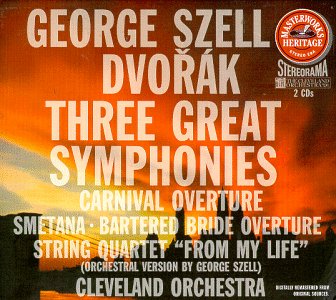 그의 걸작
녹음에서 드보르작을 빠뜨릴 수는 없다. 셀이 정서적으로 너무
건조하다고 생각하신다면, 그의
드보르작을 추천하고 싶다. 헤리티지
시리즈에는 교향곡 7~9번(1958~60년의 스테레오)이 올라가 있는데, 매우 훌륭하다고 평판이
자자하다. 나는 9번만 들을 수 있었는데, 결코 (우리가
바라는 만큼) 보헤미아
냄새가 난다고는 말할 수 없지만 그의 녹음
치고는 이례적일 만큼 서정이 표면으로 나와
있으며 오케스트라의 앙상블이 훌륭하다. 교향곡 8번은
최후의 스튜디오 레코딩(70년
4월 30일
마무리)인 EMI 음반으로도 구할 수 있는데, 커플링인 슬라브 춤곡 2곡과 함께 정밀한 앙상블, 부드러운 정서가 완전하게
조화를 이룬 정말로 훌륭한 연주이다. 염가로 구할 수 있는 '슬라브 춤곡'의
전곡 녹음(Sony)은, 세련되고 감칠맛이 감도는, 이 곡의 연주에서 항상 세
손가락 안에 꼽히는 명연이다.
그의 걸작
녹음에서 드보르작을 빠뜨릴 수는 없다. 셀이 정서적으로 너무
건조하다고 생각하신다면, 그의
드보르작을 추천하고 싶다. 헤리티지
시리즈에는 교향곡 7~9번(1958~60년의 스테레오)이 올라가 있는데, 매우 훌륭하다고 평판이
자자하다. 나는 9번만 들을 수 있었는데, 결코 (우리가
바라는 만큼) 보헤미아
냄새가 난다고는 말할 수 없지만 그의 녹음
치고는 이례적일 만큼 서정이 표면으로 나와
있으며 오케스트라의 앙상블이 훌륭하다. 교향곡 8번은
최후의 스튜디오 레코딩(70년
4월 30일
마무리)인 EMI 음반으로도 구할 수 있는데, 커플링인 슬라브 춤곡 2곡과 함께 정밀한 앙상블, 부드러운 정서가 완전하게
조화를 이룬 정말로 훌륭한 연주이다. 염가로 구할 수 있는 '슬라브 춤곡'의
전곡 녹음(Sony)은, 세련되고 감칠맛이 감도는, 이 곡의 연주에서 항상 세
손가락 안에 꼽히는 명연이다.
그의 다른 독일-오스트리아
음악도 경청할 만하다. R.슈트라우스가
특히 좋다. 작곡자에게 직접 배워서인지, '틸 오일렌시피겔', '돈 환', '죽음과
정화'(Sony)는 명연으로 알려져 있다. R.슈트라우스의
음향은 다소 무겁게 만들기 쉬운데, 셀의
연주는 항상 텍스처가 선명하고 결코 필요 이상
육중하게 들리지 않는다. 푸르트뱅글러처럼
그도 '차라투스트라'를 녹음하지
않았음이 안타깝다.
브루크너 연주는
클리블랜드와 정규 스튜디오로 교향곡 3,8번(Sony), 빈
필하모닉과 잘츠부르크 실황 7번(Sony)이 있다. 장대하면서도
그다운 깔끔한 연주이다. 말러는 4번(Sony; 협연자
라스킨)과 6번(Sony, 실황)이 있는데 내가 없어서 뭐라 말을 못
하겠다. 베토벤은 서곡집과 교향곡 전집이 있는데(Sony), 녹음에
대해 엔지니어와 상의하다가 셀 자신이 마음에
드는 마이크로폰을 자비로 사서 녹음에 썼다는
에피소드가 있다. 브람스 교향곡/서곡 녹음도
있는데(Sony) 하이든 주제 변주곡은 텍스처의
선명함에서 매우 칭찬할 만하다. 슈만 교향곡 전집(Sony)은 셀
자신이 '슈만의 마음을 보여 주겠다'고
말했다는데, '셀의 마음을 보여 준 연주'로 높이 평가받고
있다. 헤리티지 시리즈의 비싼 가격이 문제긴
하지만.
그 외의 작곡가의
음반 중에서는 코다이 '하리 야노시' 모음곡, 프로코피에프
'키제
중위', 무소르그스키 '전람회의 그림'이 들어간
음반을 권하고 싶다(Sony
염가반). 지금까지 누차
언급한 셀의 장기인 정밀함이 고스란히 살아
있고, '음악적인 익살'도 아주 품위 있게
취급해 놓았다. 저속함과 대충대충만큼 셀의 연주와
거리가 먼 단어도 없다. 존 컬쇼가 이끈
런던 Decca 세션들은 유명한데, 런던 심포니를
지휘하여 커즌과 브람스
협주곡 1번, 헨델의 관현악곡, 차이코프스키
교향곡 4번을 녹음했다. 경이적인 사실은
이 객원 지휘에서도 앙상블이 클리블랜드를
지휘했을 때 못지 않다는 점이다. 런던 심포니의
적응력도 좋지만 셀이 제한된 시간 내에
오케스트라를 자신의 의도대로 장악하는 능력이
대단했음을 잘 보여 준다. 브람스
협주곡이야 너무 유명하니 내가 굳이 더 말할
필요가 없는데, 헨델과 차이코프스키 음반을 구하기
어려운 점은 아쉽다.
특히 (낡은 하티
편곡판이긴 하지만)
헨델이 대단히 훌륭하기
때문이다. 콘서트헤보우를 지휘한 베토벤 교향곡 5번과
시벨리우스 교향곡 2번은 낱장 CD로 재발매됐는데(Philips), 시벨리우스는
통상적으로 익숙한 영국-북유럽계의
연주와는 맛이 다소 다르다. 월튼, 힌데미트, 야나체크
등의 20세기 음악에서도 셀은 정평이 나 있는데, 아마
구조를 파악하여 정리하는 능력 때문이었을
것이다.
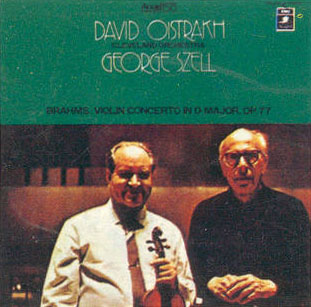 셀의 레코드 레파토리 중 빼놓을 수 없는
부분은 협주곡이다.
순수 교향곡/관현악곡
레파토리만 해도 엄청나지만, 셀은 특히 협연자
운이 좋았다. 위에서 언급한 드보르작의 첼로 협주곡은
특히 그렇다. 1937년에는 카잘스(HMV), 1962년에는
푸르니에(DG), 1969년에는 로스트로포비치(해적판)라는 20세기를
대표하는 세 첼리스트와 모두 연주할 기회가
있었다. 이 곡의 팬이라면 아마 앞의 두 개 정도는
모두 갖고 계시리라 믿는다. 개인적으로는
푸르니에 협연은 이 곡의 기준으로서 가장
추천할 만하다고 생각한다.
셀의 레코드 레파토리 중 빼놓을 수 없는
부분은 협주곡이다.
순수 교향곡/관현악곡
레파토리만 해도 엄청나지만, 셀은 특히 협연자
운이 좋았다. 위에서 언급한 드보르작의 첼로 협주곡은
특히 그렇다. 1937년에는 카잘스(HMV), 1962년에는
푸르니에(DG), 1969년에는 로스트로포비치(해적판)라는 20세기를
대표하는 세 첼리스트와 모두 연주할 기회가
있었다. 이 곡의 팬이라면 아마 앞의 두 개 정도는
모두 갖고 계시리라 믿는다. 개인적으로는
푸르니에 협연은 이 곡의 기준으로서 가장
추천할 만하다고 생각한다.
다음으로는
브람스의 협주곡 4곡이 특히 좋다. 1938년 슈나벨과
협연한 피아노 협주곡 1번(HMV)부터 시작하여
독주자들이 호화스럽기 짝이 없다. 특히 많이
추천되는 녹음은 커즌과 협연한 피아노 협주곡 1번(Decca; 런던
심포니), 제르킨과 협연한 1,2번(Sony), 오이스트라흐/로스트로포비치와
협연한 바이올린 협주곡 및 2중 협주곡(EMI)이다. 바이올린
협주곡만 본사 CD 발매 목록에서 오래 빠졌다가 최근에야 Great recordings 시리즈로
나왔고(왼편 자켓은 일본 발매 LP고, 역시 일본
발매 CD도 들어왔다),
나머지는 전부 쉽게 구할 수
있다. 이 중 2중 협주곡은 거의 절대적인 지위에 올라
있는데, 두 독주자의 열연을 매우 효과적으로
뒷받침해 주고 있으며 오케스트라의 일사불란한
연주가 아주 인상적이다3). 베토벤 협주곡도
있는데, 피아노 협주곡 전집은 그가 아끼던 레온
플라이셔(Leon
Fleisher)와 60년대 초까지(Sony), 1968년에
길렐스와 EMI에서 두 번 완성했다. 후자는 독주의
솜씨만 해도 초일류급이라 할 만 하며, 특히 '황제'가
돋보인다. 바이올린 협주곡은 1934년 후베르만/VPO 협연이
있는데(HMV), 오래 전부터 CD로 나와 있던 역사적인 연주다.
모차르트 협주곡도
꽤 많다. 제르킨과, 로베르
카자드쥐라는 두 Columbia 전속
피아니스트와 협연한 레코드들은 'long sell' 축에
끼는 고전인데, 특히 카자드쥐 협연이 유명하다. 카자드쥐
페이지에서 이미 설명했으니 여기서 다시
반복하지 않아도 좋을 것이다. 아이작 스턴의
전성기에 녹음된 1,3,5번 협주곡(Sony)이 있다. 마지막으로,
매우 높은 신뢰를 받는 R.슈트라우스의
'돈
키호테'(Sony; 푸르니에가 첼로 독주)를 빼놓을 수 없으며, 같이
들어간 호른 협주곡 1번(협연자는 블룸)도
언급하자.
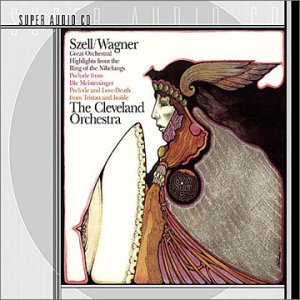 그는 젊었을 때
오페라 극장에서 오래 지냈고, 장년기에도
메트로폴리탄을 지휘했기 때문에 오페라 녹음이
많을 법한데도 불구하고 정식 스튜디오 녹음은
단 하나도 없다. 발췌라도
만족하신다면, 주저없이
바그너 '반지' 발췌를 추천한다(Sony; 오른편은 SACD 자켓임).
첫 곡인 '신들의
발하라 성 입장' 장면이
기가 막히게 신선하다. 솔티
전곡반으로 이 부분을 듣다가(도너
역 배히터의 묵직한 목소리도 이런 느낌을
더했겠지만) 셀 음반을
올려놓는 순간, 나는 곡을
잘못 틀었나 의심하지 않을 수 없었다. 투명한 비단 같이 섬세한
오케스트라의 음향, 잘
통제되면서 장렬한 금관까지 곁들여 정말 맛이
독특하다. 이 음반의 다른
곡들도 어느 것이나 모두 정교한 구축성과
섬세한 오케스트라의 음향을 겸비하고 있다. 염가 Essential
시리즈, SACD 어느
편으로도 구할 수 있다. 다른
전주곡/서곡들도 나와
있는데(역시 Sony고 라이선스로도 나왔었다), 매력이 '반지' 발췌만은 못해 보인다.
그는 젊었을 때
오페라 극장에서 오래 지냈고, 장년기에도
메트로폴리탄을 지휘했기 때문에 오페라 녹음이
많을 법한데도 불구하고 정식 스튜디오 녹음은
단 하나도 없다. 발췌라도
만족하신다면, 주저없이
바그너 '반지' 발췌를 추천한다(Sony; 오른편은 SACD 자켓임).
첫 곡인 '신들의
발하라 성 입장' 장면이
기가 막히게 신선하다. 솔티
전곡반으로 이 부분을 듣다가(도너
역 배히터의 묵직한 목소리도 이런 느낌을
더했겠지만) 셀 음반을
올려놓는 순간, 나는 곡을
잘못 틀었나 의심하지 않을 수 없었다. 투명한 비단 같이 섬세한
오케스트라의 음향, 잘
통제되면서 장렬한 금관까지 곁들여 정말 맛이
독특하다. 이 음반의 다른
곡들도 어느 것이나 모두 정교한 구축성과
섬세한 오케스트라의 음향을 겸비하고 있다. 염가 Essential
시리즈, SACD 어느
편으로도 구할 수 있다. 다른
전주곡/서곡들도 나와
있는데(역시 Sony고 라이선스로도 나왔었다), 매력이 '반지' 발췌만은 못해 보인다.
그 외에 극음악이나 성악곡 반주라면 1969년
빈에서 빈 필하모닉과 녹음한 베토벤 '에그몬트' 극
부수음악(Decca), 슈바르츠코프를 반주한 R.슈트라우스의 '4개의
마지막 노래'와 가곡들(EMI;
런던 심포니와 베를린 라디오
심포니), 슈바르츠코프와 피셔-디스카우가
독창이라는 화려한 멤버의 말러 '아이의 이상한
뿔피리'(EMI; 런던 심포니)가 있다.
그는 지휘봉을 들면 엄격과 고지식의 화신 같았고 도수 높은 안경 때문에 멀리서 보면 눈이 합쳐져 보여서 '외눈박이'라는 별명이 붙었지만, 무대에서 내려오면 그렇게 사람 좋은 영감이 없었다고 전한다. 1954년 제 3 호른 주자로 출발하여 다음 해에 제 1호른 주자가 된(1977년까지 재직) 마이런 '마이크' 블룸(Myron 'Mike' Bloom)은 이렇게 말한다. "첫 해에 저는 (너무 긴장하여) 거의 좀비처럼 무대로 올라갔다 내려갔다 했습니다. 처음 중요한 솔로 파트를 다뤄야 하는 (R.슈트라우스의) '틸 오일렌시피겔' 연습에서 셀은 저를 무자비하게 몰아붙였고, 저는 거의 미칠 지경이었죠. 저는 '더 이상 이렇게는 못 하겠습니다'고 말하고, 연습 끝난 후 지휘자실로 갔습니다. 그는 들어오라고 했고, 저는 울음부터 터뜨렸습니다. 그는 포옹해 주었습니다. 믿을 수 없었죠...."
(c) 2003~, 이영록 ; 링크는 자유지만, 인용시에는 미리 메일을 주시기 바랍니다.
| Music Home | Photo Gallery | Discography | Jacket Images | English |
Created ; 5th
Jan. 2003
Last update ; 5th Feb. 2003